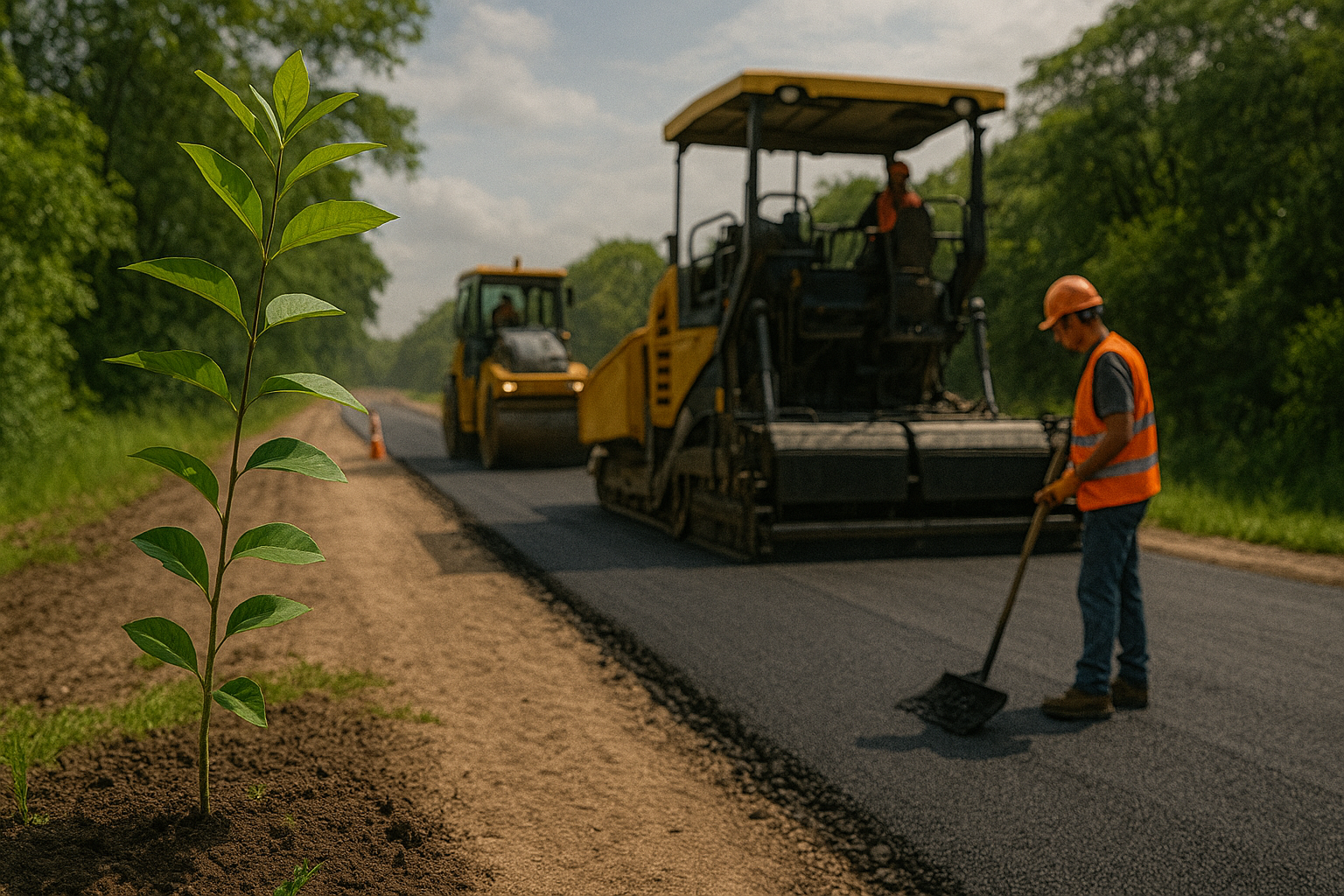From Asphalt to Action: Greening Road Development for a Cooler Planet
A new study by the Global Infrastructure Research Centre and the Institute for Climate Policy Studies warns that unchecked road expansion could drastically raise global carbon emissions. It urges governments to adopt low-carbon materials, electric transport, and smarter planning to build roads without worsening climate change.

A new study by the Global Infrastructure Research Centre (GIRC) and the Institute for Climate Policy Studies (ICPS) has issued a clear warning: road construction and expansion, while essential for development, are also significant contributors to global carbon emissions. The report, Carbon Emission and Road Investments, urges governments to rethink how roads are built, maintained, and used if the world hopes to meet its climate targets.
For decades, roads have been synonymous with growth and opportunity, connecting cities, linking rural communities, and fueling trade. Yet, behind every kilometer of newly paved road lies an environmental cost that often goes unnoticed. The study finds that building just one kilometer of road can emit 100 to 150 tons of carbon dioxide, primarily from the production of cement and asphalt and the operation of heavy machinery.
But the greater challenge emerges after construction. Over a road’s lifespan, 70 to 90 percent of its total emissions come from the vehicles that use it. As accessibility increases, more cars and trucks hit the road, driving up fuel consumption and carbon pollution. The researchers describe this as a cycle of “induced demand,” where better roads lead to more traffic, and ultimately, more emissions.
The Carbon Curve: Three Possible Futures
To understand the long-term impact, the researchers modeled three scenarios for road-related emissions through 2050. The business-as-usual scenario, where fossil fuel vehicles remain dominant, would see emissions soar by up to 120 percent compared to current levels. In the moderate change scenario, with better fuel efficiency and limited biofuel use, emissions still rise by 40 to 60 percent. Only under the strong mitigation scenario, marked by widespread electric vehicle adoption, public transport investment, and greener construction materials, do emissions begin to fall, dropping by 20 to 30 percent by mid-century.
A chart included in the report makes the contrast stark: strong mitigation could flatten or even reverse the emissions curve, while inaction guarantees a steep upward trajectory. The authors note that choices made in the next decade will determine which path the world follows.
Designing Roads for a Cooler Planet
Despite the daunting numbers, the report offers a hopeful roadmap. It outlines several strategies that can make road infrastructure more climate-friendly without slowing economic growth. One approach is to use low-carbon materials, such as recycled asphalt or blended cement that emits less CO₂ during production. The report also calls for smart traffic management systems powered by artificial intelligence, which can optimize traffic flow, reduce congestion, and save fuel.
Electrification is another game-changer. Expanding electric vehicle infrastructure and integrating renewable energy sources can significantly cut transport emissions. The study recommends prioritizing maintenance and rehabilitation of existing roads over constant expansion, noting that upgrading and maintaining current infrastructure is often more cost-effective and environmentally sound than building new highways.
Additionally, the report advocates for multi-modal planning, designing roads that connect seamlessly with rail, bus, and water transport systems to reduce dependence on private vehicles. Such integrated networks, the authors argue, can deliver both mobility and sustainability.
The Economic and Social Payoff
Beyond cutting emissions, low-carbon road strategies can generate substantial economic and social benefits. Cleaner air leads to better health outcomes, and reduced fossil fuel dependence strengthens national energy security. According to the report, every dollar invested in sustainable road design can yield three to five dollars in avoided climate damage and health costs.
Moreover, the shift toward green infrastructure can stimulate job creation. From producing recycled materials to maintaining electric vehicle charging networks, the transition to cleaner roads can support thousands of new, high-quality jobs. “It’s not just about reducing emissions, it’s about creating a modern, resilient economy,” the study notes.
Policy Shifts for a Sustainable Future
The researchers emphasize that technology alone won’t solve the problem; policy must lead the way. They call on governments to integrate carbon accounting into every road project assessment, ensuring that the climate cost of each investment is transparent. They also recommend adopting green certification standards such as Envision and CEEQUAL, which evaluate the environmental and social performance of infrastructure projects.
A key proposal is climate-responsive budgeting within transport ministries, which would allocate funds based on long-term sustainability rather than short-term economic gains. The report further suggests establishing national databases to track emissions across a road’s life cycle, helping policymakers measure progress and refine their strategies.
The message from the Carbon Emission and Road Investments report is both simple and urgent: roads can either drive us toward a sustainable future or lock us into a high-carbon past. If countries continue to build using old models and materials, they risk paving the way to environmental disaster. But by embracing innovation, clean energy, and smarter design, the same roads can become a foundation for climate resilience and inclusive growth.
- FIRST PUBLISHED IN:
- Devdiscourse
ALSO READ
Empowering Women Through Solar Sakhi Abhiyan: Bridging Villages to Clean Energy
Delhi's Solar Rooftop Revolution: A Bright Future for Clean Energy
ADB President Calls for Unified Action on Clean Energy and Port Transformation
Africa’s Green Industrial Future: Clean Energy as the Engine of Re-industrialisation
Sport Positive Awards: Champions for a Sustainable Future










